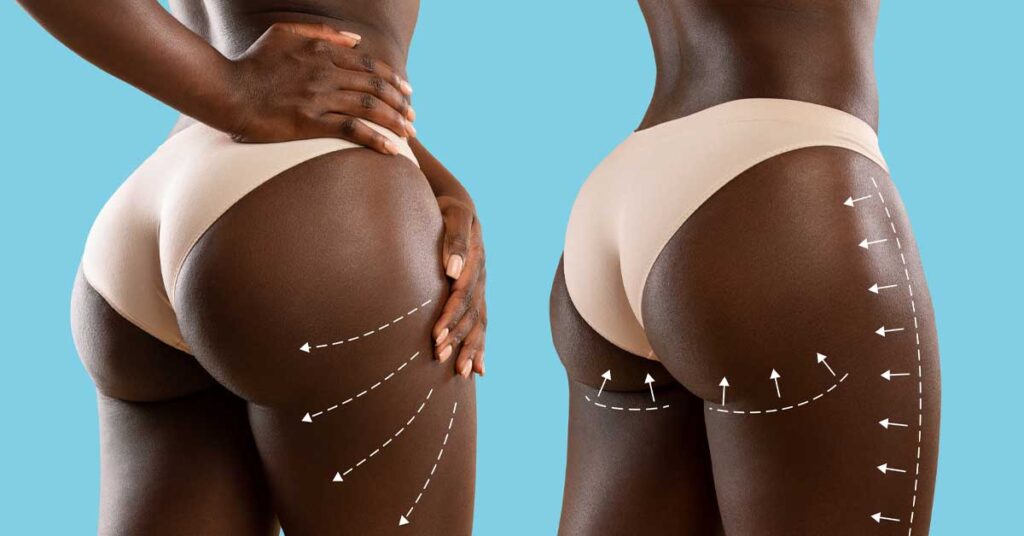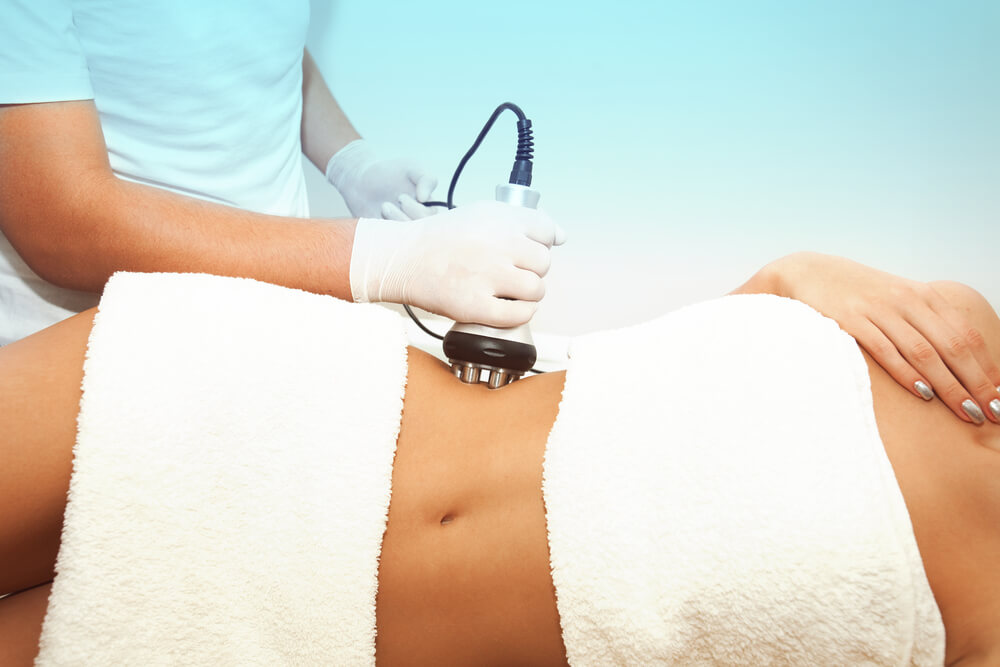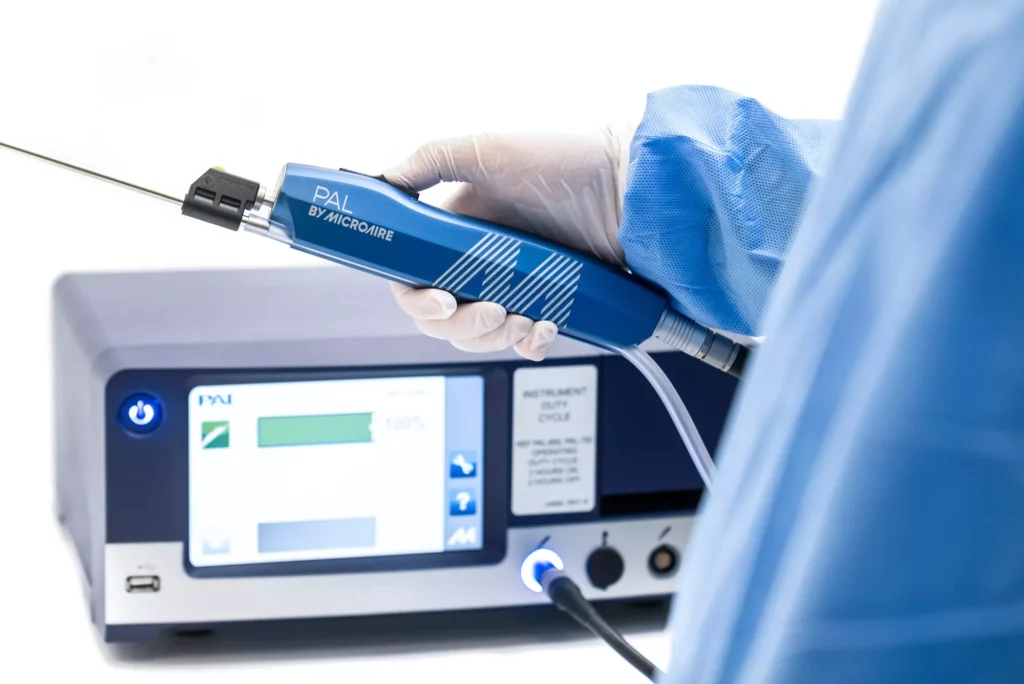Key Takeaways
-
BBL results can vary depending on individual body composition, the expertise of the surgeon, and post-operative care. Knowing the impact of these elements is important for developing realistic expectations.
-
Fat retention is key to understanding BBL results. Not all of the fat cells that are transferred will survive and the right post-operative care can greatly improve fat survival rates.
-
Surgical techniques and the surgeon’s skill are vital for achieving precise, symmetrical, and aesthetically pleasing results. The most important step is choosing an experienced, qualified surgeon.
-
Staying within a few pounds of your post-surgical weight is key to keeping your BBL looking its best. Weight changes may affect overall body fat distribution and shape.
-
Maintaining a healthy lifestyle in the form of a nutrient-rich diet, consistent exercise, and good hydration habits will further facilitate recovery and promote healthy, long-lasting results.
-
Be diligent about post-operative instructions. Steer clear of pressure on your buttocks and use compression garments to promote healing and fat retention.
Understanding why Brazilian Butt Lift (BBL) results vary involves examining fat retention and body composition. Fat retention plays a key role in shaping the final outcome, as the body naturally absorbs some of the transferred fat. Differences in metabolism, lifestyle, and recovery practices further add to these variations.
Body composition, in terms of muscle and fat distribution, also plays a role in how the procedure improves your overall shape. Each individual has their own unique anatomy, which is to be expected regardless of the same surgical technique being employed.
By understanding these factors, it’s possible to better manage expectations and truly enjoy the individualized beauty of BBL results. Taking a closer look at these components can help you have a better idea of what kind of results to expect from the procedure.
What Is A BBL Procedure
Definition of BBL
The Brazilian Butt Lift, or BBL, is one of the most popular cosmetic surgeries. It creates a more appealing shape and size to the buttocks through the process of fat transfer. Because a BBL employs fat grafting techniques that use your own body fat, it’s different from traditional implants.
While implants use synthetic materials, this technique provides a more natural option. It’s this natural body-inclusive approach that truly makes this procedure unique. It has broader appeal in that it doesn’t involve putting foreign objects in the body.
In the BBL procedure, fat is removed from your body — usually from the abdomen, thighs, or flanks — through liposuction. This helps to produce the fat required for the transfer. Simultaneously, it sculpts the donor sites, providing two great advantages.
The fat that is collected is then processed and strategically injected into the buttocks to achieve a rounder, fuller look. This strategic distribution of fat assists in creating a curvier appearance, customized to the patient’s body type and desired aesthetic.
Purpose of BBL Surgery
The primary goal of a BBL is to improve the shape and volume of the buttocks to better complement the rest of the body. For that reason, most patients seek the procedure to add volume or symmetry.
Aside from the cosmetic aspect, the surgery usually results in increased self-esteem and improved body image. For some, additional procedures, such as a thigh lift when done in conjunction with a BBL, can help further define and enhance their overall look.
Why BBL Results Vary
Individual Body Composition Differences
Body composition is a huge factor impacting the outcome of a BBL. Every body type stores and retains fat differently and in different places. Someone who has a higher fat-to-muscle ratio will see a more rounded appearance of their buttocks.
In comparison, a person with greater muscle mass will look completely different. Genetics influence how your body responds to fat transfer, affecting both retention and overall shape. Two different people can have the exact same surgery and come out with completely different outcomes.
This is because of the inherent biological diversity of their bodies.
Fat Retention and Survival Rates
However, not all of the fat that’s transferred survives after a BBL. Fat cells do much better when deprived of a healthy blood supply. If they don’t get it, then they can undergo reabsorption back into the body.
The quality of the harvested fat plays a role—denser or healthier fat tends to have better survival rates. Knowing that some fat loss will occur naturally will set your expectations for what the final results should be.
Weight stability is an important factor in this process. These fluctuations may alter the appearance of the buttocks over time.
Surgical Techniques and Expertise
The surgeon’s expertise makes a world of difference in how your BBL will turn out. A highly skilled surgeon can utilize strategic placement techniques to lay the fat so that it is even, improving overall symmetry and ensuring a natural look.
These advanced approaches help improve fat survival and minimize risks. Third, selecting a board-certified plastic surgeon who has a proven track record is key to getting the results you’re looking for.
Post-Operative Care and Healing
Appropriately, healing is perhaps the most important phase. Compression garments help control swelling and support the grafted fat. Sticking to meticulous post-op guidelines, such as not sitting directly on your buttocks for several weeks, allows the fat to properly settle into place.
A healthy weight, proper hydration, and a diet high in healthy fats will further ensure success long-term. Skipping these steps will ruin the result.
Understanding Fat Retention in BBL
Fat retention refers to how well transplanted fat cells survive and adapt within the body after a Brazilian Butt Lift (BBL). First, the procedure starts with harvesting fat, typically from the abdomen or thighs. Then, the team purifies the fat and precisely injects it into the buttocks to improve shape and volume.
Although the goal is to create results that are permanent, a certain amount of the fat that is transferred doesn’t make it. What is fat retention? After a BBL, on average anywhere from 30% to 50% of the fat will be reabsorbed within the first few months. With adequate post-operative care and techniques, as much as 90% of the fat can survive long-term.
How Fat Is Transferred in BBL
The procedure starts with liposuction, removing fat from donor areas such as the stomach or flanks. After extraction, this fat is purified to drain the excess fluids and impurities, resulting in high-quality fat cells ready for transfer.
Surgeons carefully inject small amounts of fat into the buttocks through various techniques and guidance. This provides for an even distribution, helping to maintain a safe and healthy blood supply. How we handle things at this step makes all the difference in retention. It has a direct impact on fat viability, therefore determining the overall success of the procedure.
Factors That Affect Fat Survival
There are many factors that determine how much fat will be retained after a BBL. A robust blood supply is essential as it feeds the newly transferred fat cells. The quality of the harvested fat comes into play here, as healthier fat cells will have a greater chance of thriving.
The surgical technique is important as well – skilled practitioners perform advanced techniques to retain the most fat. Circumstances in the recipient site, such as tissue health and blood flow play a role in whether or not the transferred fat will successfully integrate.
Proper post-operative care can go a long way to improve outcomes. For example, not putting pressure on the buttocks and adhering to post-op care instructions contribute to protecting the fat as it goes through the process of stabilizing.
Common Misconceptions About Fat Retention
Some people think that all BBL results are permanent, but this isn’t necessarily true. Significant changes in weight can lead to drastically different outcomes. Sometimes losing only 10 pounds fast can change your body contour entirely.
Conversely, if you lose 10-15 pounds, your fat may shrink unequally, causing some areas to sag and others to bulge. In order to retain symmetry, you should try to stay within five pounds of your post-operative weight.
A second myth is that fat can be transferred with no limit. To keep BBLs safe and provide the best results, we need to accept that less is more. Excess fat can jeopardize blood supply and fat survival.
Role of Body Composition in BBL Outcomes
Body composition is fundamental to the success and duration of Brazilian Butt Lift (BBL) outcomes. The balance between fat and muscle in your body directly affects how much of the transferred fat survives and how it reshapes your figure. Patients with greater amounts of muscle mass might achieve different results than those with greater amounts of body fat.
Muscle serves as a tighter foundation, bettering the appearance of the grafted fat. Individuals who carry more body fat tend to have a more blended contour. They can experience poor fat retention due to natural absorption rates.
Influence of Muscle and Fat Ratios
The ratio of muscle to fat affects the appearance of the buttocks post-operatively. Individuals with previously toned glutes will observe something curious. The new fat distributes more evenly, creating a more lifted and fuller look.
A well-developed muscular foundation serves as an excellent sculpting canvas. An ongoing fitness regimen focused on building glute strength retains your results. It helps the fat graft integrate naturally into your new shape. Consider this as an alliance—your body’s pre-existing architecture and the grafted fat combine forces.

Impact of Skin Elasticity and Quality
Smooth skin is a key consideration for achieving a healthy body shape. Younger individuals often enjoy more elastic skin, which can be maintained through consistent weight management strategies like proper hydration and daily skincare. These healthy lifestyle choices allow fat reabsorption to occur naturally, helping fat deposits fall into place and enhancing overall body composition adjustments.
Skin that’s too lax may struggle to support new contours effectively. Simple habits, such as staying hydrated and incorporating moisturizing products into your routine, can significantly improve the look and feel of your skin, contributing to the success of your weight loss journey.
Weight Fluctuations After Surgery
As with most procedures, radical weight changes will change a BBL’s aesthetic. Fat grafts act exactly like the fat that is already in your body. If you gain weight, those grafts can grow in volume, but if you lose weight, they can shrink.
Research shows that 30% to 50% of the transferred fat typically gets absorbed within months, making weight management critical for maintaining results. Genetics and hormonal shifts are factors, affecting how and where your body wants to hold fat as you age.
A healthy, stable weight and a commitment to regular exercise help maintain the results over time.
1. How To Optimize BBL Results
1. Follow Post-Operative Instructions
The most important thing you can do following your Brazilian Butt Lift (BBL) is to diligently adhere to your surgeon’s post-operative guidelines. These guidelines have been specifically designed to promote a smooth recovery and retain the most healthy fat possible. After the procedure, essential practices such as wearing compression garments as instructed will help prevent swelling and promote proper healing.
Avoiding smoking or drinking alcohol during recovery is crucial, as both can negatively impact your healing and fat survival. Proper scar care, including keeping incisions clean and dry, aids in preventing infection and allows the skin to heal evenly and smoothly. Following these steps not only prevents complications but also supports weight maintenance and increases your chances of enjoying long-lasting results.
Patients who truly commit to their post-op care experience better fat survival rates, leading to more even and permanent results in their overall body shape.
2. Maintain a Stable Weight
Extreme weight changes can seriously affect your BBL results. Gaining or losing over five pounds can throw off your proportions and impact how the fat you transferred settles. A stable weight aids in body symmetry and gives the fat cells time to take on their surroundings.
Making lifestyle changes such as practicing portion control and being more physically active are key. Adding 150 minutes of moderate aerobic exercise weekly, such as brisk walking, supports overall health without putting stress on the healing body. Maintaining a stable weight is crucial for maintaining the equilibrium attained after surgery.
3. Avoid Pressure on Transferred Fat
In the early recovery stage, you want to do your best to not put direct pressure on the buttocks. Putting pressure on the transferred fat by sitting or lying on it can cut off blood supply and prevent fat from taking. Instead, use a BBL pillow or sleep on your side or stomach to ensure the area is protected.
This precaution is particularly critical in the first two weeks when the fat cells are at their most fragile. Maintaining these habits post-op can make a huge difference in fat retention. Research shows that 60% to 80% of the fat that is injected takes permanent residence after 6 months.
4. Eat a Nutrient-Rich Diet
A nutrient-rich diet is key in not only recovering from your procedure, but keeping your results long-term. Foods high in healthy fats like avocados and nuts encourage fat to stay put. Proteins such as chicken and fish help repair tissue, and the vitamins from leafy greens help keep your skin elastic and healthy.
Filling the plate with nutrient-dense foods does more than assist the body in healing. It sets the stage for long-term health. To support recovery, include more foods such as salmon, an excellent source of omega-3 fatty acids. It has the side benefit of promoting long-term skin health.
5. Stay Hydrated and Active
Staying hydrated is important during recovery, as it helps flush toxins from the body and decrease swelling. Hydration by drinking at least 8–10 glasses of water every day will help you heal faster and more optimally. Gentle, low-impact movement such as light walking boosts circulation without putting strain on the healing body.
Plus, regular activity supports optimal body composition overall, which will help your new curves stick around. Adding fitness routines into your lifestyle not only assures you that your surgery will last longer, but you will feel healthier overall.
Long-Term Effects of Weight Changes on BBL
How Weight Gain Impacts Results
Here are some surprising ways that weight gain can affect your BBL results. Depending on how your body stores excess fat, those deposits may show up in a number of places—like the buttocks. While this may sound like a boon for keeping volume, uneven fat distribution post-op is notorious.
For example, weight gain will add more volume to your abdomen or thighs. This alteration can have a significant impact on the proportions the BBL is able to achieve. When taken to extremes, this can quickly ruin the symmetry and overall aesthetic you once created.
Monitor your weight loss or gain and keep it within a 5-pound window. That way, you’ll still keep the aesthetic you want and prevent any ugly surprises.
Effects of Weight Loss on Transferred Fat
Another issue is that substantial weight loss reduces the volume of transferred fat. The fat cells transferred during a BBL procedure depend on a healthy blood supply to survive. With considerable weight loss, these cells can shrink, often giving the buttocks a flatter look.
Even worse, fat doesn’t always leave evenly, which can lead to an uneven or lopsided appearance. To prevent this, the best solution is to keep a healthy, stable body weight. In fact, studies reported that the body absorbs as much as 50% of the fat that’s transferred in a BBL.
This process usually takes place within the first few months post-procedure. Achieving a stable, healthy weight beforehand gives your body the best chance to hold on to newly transferred fat.
Strategies to Maintain Longevity
Activities like strength training and cardio help maintain muscle tone and body composition. A diet rich in lean protein, healthy fats, and complex carbs supports overall health and fat retention.
Avoid drastic fluctuations by maintaining your weight in a stable range, ideally within 5 pounds.
Importance of Healthy Lifestyle After BBL
Healthy lifestyle plays a huge role in getting the best results from your BBL. Most importantly, it enables you to sustain those results long-term. Your diet, your exercise routine, daily habits – all of these factors combine to determine your body composition.
They affect the long-term appearance of the fat you transfer. Cultivating sustainable routines increases the cosmetic benefits of the procedure. It can even have an impact on your overall happiness.
Benefits of Regular Exercise
In addition, maintaining an active lifestyle can promote better muscle tone and help keep the fat in the treated areas. By adding strength training to your BBL lifestyle, you can improve the shape and firmness of your glutes.
This will enhance and perfect your BBL results. Frequent exercise increases your metabolic rate, helping you keep a healthy weight—which is very important. Shoot for at least 150 minutes of moderate-intensity activity per week.
Brisk walking, swimming, or other similar activities will ensure your body stays in the best shape and balance possible. No activities that apply direct pressure on the gluteal area are permitted in the early recovery period.
Role of Balanced Nutrition
Proper nutrition goes a long way toward recovery after surgery and keeping results long-term. A healthy diet full of lean protein, healthy fats, whole grains and fiber will help your body heal quickly and efficiently.
It keeps you more likely to keep the weight off. Nutrients, such as omega-3 fatty acids found in fish, increase skin elasticity. At the same time, vitamin C from citrus fruits aids in fat retention.
Above all, staying within 5 pounds of your post-BBL weight will let you keep the proportions you worked hard to achieve in surgery. Long-term, gradual weight change (1-2 pounds/week) can keep the body looking the way you want.
Managing Stress for Better Healing
Stress management is key to supporting recovery and long-term outcomes. Techniques including meditation, yoga, and deep breathing exercises can all help foster relaxation and make you feel better mentally and physically.
Stress also prevents you from healing physically. When you prioritize sleep and work towards getting 7-9 hours of sleep per night, you’re allowing your body to repair itself in the most efficient way possible.
This balance of mental and physical health helps achieve lasting, symmetrical results.
Conclusion
BBL results can vary widely based on numerous factors, one of which is fat retention and body composition. Remember, every body is different, so these results can vary greatly. Being active, eating healthy and taking care of yourself post-op is what gets you the best results. Weight gain or loss will impact results over time as well, so maintaining a healthy, stable weight is important. A healthy lifestyle will maintain your improvements and improve your quality of life and confidence.
By having a better understanding of your body and what it needs, you can set realistic expectations. Collaborate directly with your surgeon to both conceive and then preserve the results you desire. Each move you make post-operation matters.
Whether you’re thinking about getting a BBL or recently had one, the key lies in care and maintenance. Stay smart, stay inquisitive, and stay healthy. Without your commitment, it all comes down to luck.
Frequently Asked Questions
What is a BBL procedure?
A Brazilian Butt Lift (BBL) is one of the most sought-after cosmetic surgeries today, enhancing overall body shape by improving the contour and volume of your buttocks through fat reabsorption from your belly or legs.
Why do BBL results vary?
Understanding fat reabsorption and body composition, along with surgeon expertise and post-procedure care, significantly impacts BBL outcomes. Additionally, each individual’s healing process and healthy lifestyle choices play a crucial role in determining the final outcome as well.
How does fat retention affect BBL results?
In fact, as much as 50% of the transferred fat does not survive after a BBL, highlighting the importance of proper weight management strategies. Usually, 60-80% of the fat cells stay alive, with the exact number varying based on surgical technique and the patient’s healing process.
Can body composition influence BBL outcomes?
Again, body composition is a huge factor in effective fat transfer techniques. Patients with greater availability of fat to transfer generally achieve superior outcomes, while those with significant weight fluctuations or lower fat reserves often find the procedure to be less successful.
How can I optimize my BBL results?
Follow your surgeon’s post-op instructions to the letter. To maintain a consistent weight and avoid unwanted fat, keep your weight relatively stable, avoid direct pressure on your buttocks for several weeks, and ensure you drink plenty of water. Proper aftercare is essential to fat retention.
What happens if I gain or lose weight after a BBL?
Major fluctuations in weight can significantly impact exercise and alter your BBL results. Weight gain may lead to unwanted fat deposits in the butt shape, while weight loss can result in volume loss and symmetry issues.
Why is a healthy lifestyle important after a BBL?
This is why a healthy lifestyle, including consistent exercise routines and balanced diet choices, is key to longer-lasting results. These healthy steps not only maintain your new contours but also lead to long-term health benefits.





















